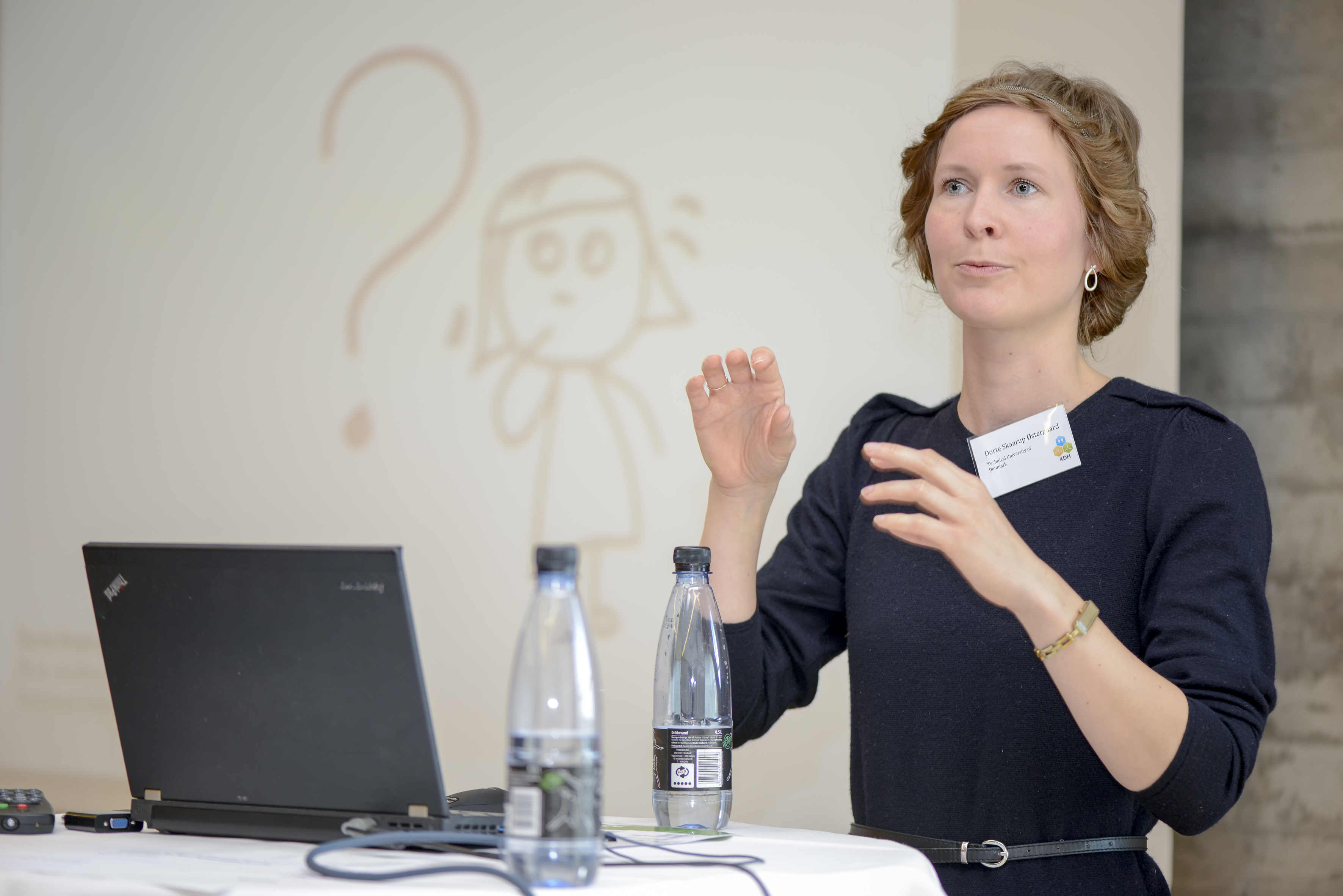Large potential to heat existing buildings with 4GDH
4DH PhD Fellow Dorte Skaarup Østergaard investigates how to heat existing buildings with low-temperature district heating. Through detailed simulation calculations of the typical buildings, she calculates the realistic dynamic heating load and compares it to the heating power of the existing heating elements with a low supply temperature.

Dorte Skaarup Østergaard presenting her work at the 2nd International Conference on Smart Energy Systems and 4th Generation District Heating. Photo: May-Britt Vestergaard Knudsen.
Two case studies
The local district heating company in Middelfart has lowered both the supply and return temperature in the district heating pipes during the last years. This becomes possible with help from a software program which optimises the temperatures in the grid, and through guidance of the customers.
The software program surveilles the user behavior and installation and sends a guide to go through the installation with customers who experience problems with comfort or high return temperature.
Another case study in Gentofte evaluated the actual radiator sizes and heating demands in four existing Danish single-family houses from the 1930s. The results indicate that there is a large potential to use low-temperature district heating in existing single family houses.
A theoretical overview found that typical existing Danish single-family houses can be heated with low-temperature heating with supply and return temperatures below 55°C/35°C for large parts of the year.
Houses that have gone through reasonable energy renovations can often be heated with a supply temperature below 50°C for more than 97% of the year. Thereby the study indicates that the main barrier for implementation of low-temperature space heating in existing buildings is the heating system controls rather than the heating power.
